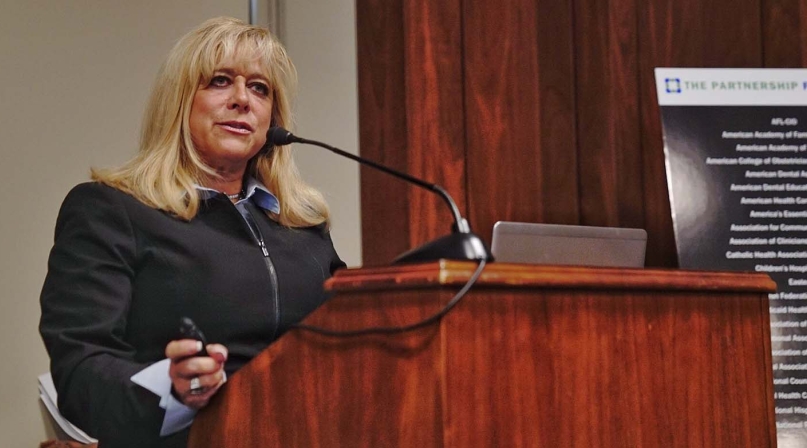Medicaid supports strategies that have cut Ohio county's overdose rate

Montgomery County, Ohio's stem of the opioid overdose tide is thanks to services funded by Medicaid, commissioner says at Hill briefing
By the end of May this year, Montgomery County, Ohio had surpassed its 2016 total in opioid overdose deaths — 349. Experts projected the annual total to break 800.
"If you Google 'Montgomery County, Ohio' and 'opioids,' you would see story after story, national stories that call us the epicenter of the heroin crisis," Commissioner Debbie Lieberman said at a Dec. 12 Capitol Hill briefing on Medicaid. "I don’t care if were number one or 101. We have to do something."
Learn More
Nearly a year before that, the county had put into place the Community Overdose Action Team (COAT), an organization of 100 different public and private agencies involved in substance abuse and addiction treatment. It was a public health-driven approach to combatting the epidemic and now, a little more than a year into COAT's existence, the overdose rate has been shrinking.
"I think we're going to end up under 800 (deaths)," Lieberman said.
It's progres she said wouldn't be possible without the funding and flexibility provided by the Medicaid program. Ohio is one of 32 states that expanded Medicaid, but Montgomery County and its seat of Dayton is the only one of four population centers in the state to see an overdose rate decline. The county is at the intersection of two major interstates and can serve as a base from which drug traffickers can reach several regions.
"We’re treating this as a public health crisis and using a brain disease approach," she said.
Medicaid plays a crucial role in funding substance abuse treatment programs, and cuts or block granting the program would likely shift those costs to county governments. The Medicaid program accounts for 21 percent of substance use disorder spending, according to the Partnership for Medicaid.
"We're working together cooperatively to make maximum effective use of our very limited resources," Lieberman said. "But all of our initiatives are expanding and adding staff," to support the increased program capacity.
County initiatives have included door-to-door visits to inform residents what resources are available, training and distribution for overdose-reversing drug naloxone, syringe exchanges and an effort to increase the capacity of detox facilities, which are necessary to get more people with addiction problems into treatment programs.
When someone overdoses, the county deploys a rapid response team either to the person who overdosed or their family. That team includes representatives from law enforcement, a local community-based organization (specific to the neighborhood), providers of medication-assisted treatment, and peer and family support services. The team makes weekly home visits.
"All of this is supported in one way or another by Medicaid and the Medicaid expansion," she said. "Expanded access to Medicaid really is the key to treatment."
Attachments
Related News

County Countdown – Dec. 15, 2025
Every other week, NACo's County Countdown reviews top federal policy advocacy items with an eye towards counties and the intergovernmental partnership.
Stretching small opioid settlement allocations helps funding do more
States and localities are set to receive $56 billion in opioid settlement dollars over an 18-year period, but not every county that receives settlement funding will get enough to build out infrastructure.

